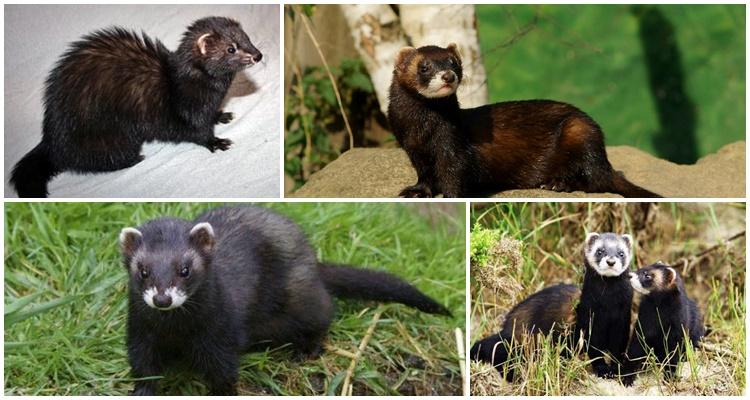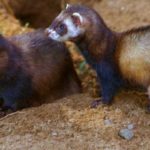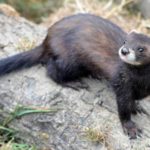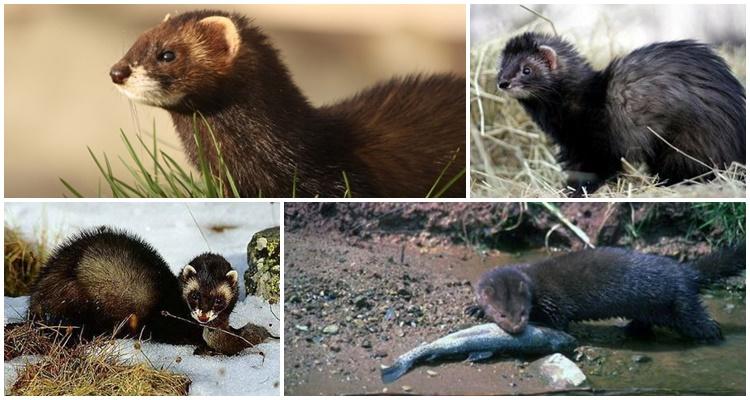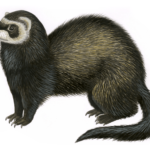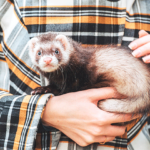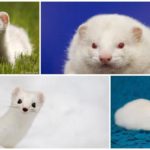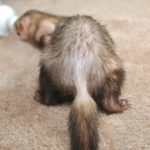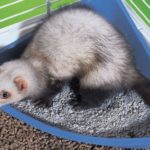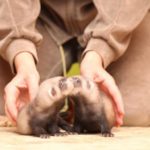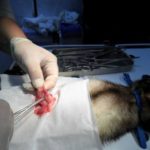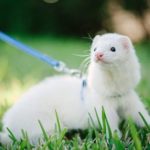The common ferret lives in Eurasia and belongs to the mustelidae family. This is one of the most typical species of the genus. Let's consider the external characteristics of the forest or black ferret, its subspecies, features of build and color. Where do animals live, what kind of life do they support, what enemies do they defend against. Their behavior, nutrition in nature and reproduction.
What does a forest (black) ferret look like?
The body structure of the black ferret has common features with the structure of all mustelids. The forest ferret can produce hybrids with the steppe species and the mink; the same species was domesticated and called the ferret.Hybrid animals are capable of reproduction, which indicates their close relationship.
Constitution
It has a long flexible body, and due to its short legs it is squat. The animal is small, the weight, depending on the sex, varies greatly: males - 1-1.5 kg, females - 0.65-0.8 kg. Forest ferrets, thanks to their narrow body, can sneak into holes, both their own and their food - mice and voles.
Color
The fur of an adult animal is black-brown, almost black legs, belly, neck and chest, fluffy tail. On the face there is a mask characteristic of ferrets. The forest species differs from the steppe species in the absence of a sharp transition from dark to lighter areas. Domestic ferrets with cream and white coloring (albinos) belong to this species.
Variation in color is observed among subspecies; the differences lie in different tones of the color characteristic of the species. In winter the coat is generally darker than in summer. The fur of the black ferret is considered valuable, but due to its overall low numbers, the animal is not a commercial species. The fur acquires special fluffiness, length and shine in autumn and winter, protecting the animal from frost.
Structural features
The black ferret's legs are strong and agile, allowing the animal to run quickly, sneak up on prey, and dig trenches and minks. The fingers have sharp claws. The neck is long, flexible, the head is small, oval, as if flattened from the sides. The ears are wide at the base, not long. The eyes are small, shiny, brown. Of the senses, ferrets rely most heavily on smell, although their vision and hearing are also well developed.
Types of ferrets
The species has 7 subspecies: Western and Central Russian forest, Welsh, Scottish, Mediterranean, Carpathian.A domesticated subspecies is the domestic ferret (furo).
Where do they live?
Wild black ferrets are common in Western Europe. There is a large population of predators in England, Russia, Karelia and Finland. There are populations of the species even in the forested areas of northwestern Africa.
Forest ferrets and ferrets were brought to New Zealand to destroy breeding rats and mice. But over time, as often happens, predators also became a threat to local herbivorous species. And farmers don't really like ferrets because they prey on poultry.
Lifestyle and behavior
Black ferrets usually live in small groves, separated from each other by meadows and fields. They avoid large forest areas. They are found in floodplains and near water bodies. Animals can swim. They are not afraid of people and can live near towns and villages, sometimes going there to hunt poultry and rabbits. Moreover, they are distinguished by their harmfulness, like all mustelids - they can eat one bird or animal, and simply strangle the rest.
The forest ferret has a sedentary lifestyle; they choose a certain territory and become attached to it. The territory of an individual is large and may overlap with the territory of other ferrets. Marking its boundaries, animals place marks using a special secretion secreted by glands under the tail. This is a sign to relatives that the area is occupied. Animals use piles of branches, stumps, and haystacks as shelter. They dig their own holes in secluded places; they also use old holes of foxes and badgers. If the animal is greatly disturbed, it abandons its old home and finds a new one nearby.
The ferret is not a silent creature. When he is unhappy or irritated, he hisses, and during a fight he squeals and screams.In a good mood, the animal makes sounds reminiscent of a chicken clucking; when attacked or frightened, it makes a short bark. Young individuals up to 1.5-2 months old can “creak” loudly.
Forest ferrets live alone, finding a mate only during the mating period. Or they meet with relatives if they violate the territory, but then it comes to a fight.
Eating in a natural environment
Black ferrets feed mainly on mice and voles. In summer, predators catch frogs, toads, young water rats, and wild birds. They hunt snakes, frogs, lizards and insects, such as locusts. They can climb into hare holes and choke hares.
They hunt birds, destroy nests located in the grass or bushes, and eat eggs and live chicks. They dig in the ground, find worms, insects, catch caterpillars and grasshoppers. Fish is rarely caught, so it does not take up much space in the diet. They almost don’t eat plant foods, fruits and berries, only if they feel that they need to replenish the body’s reserves of vitamins and minerals.
They hunt in the evening and at night, remaining in burrows during the day. They wait for prey at the burrows or catch them on the run. In the summer they often go hunting, eat the meat of the caught animals, and take the skins into a hole, where they cover the floor of their home with them.
In the fall, they try to accumulate a lot of fat in order to more easily endure the winter cold. In winter, if the weather is favorable, they also go hunting. Grouse and black grouse are pulled out from under the snow. During periods of hunger, they can feed on carrion or leftover human food.
Enemies in the wild
By nature, black ferrets are fearless and aggressive; they can fight back against enemies that exceed them in size and weight. They move in long leaps and, if necessary, can jump into the water and swim.They do not climb trees, but in times of danger they are able to hide in hollows located not high from the ground.
Forest ferrets, although predators, are not large in size. For this reason, they can be hunted by wolves and foxes, lynxes. Despite the fast running of ferrets, they are not always able to escape from enemies, especially in open areas. Large birds of prey are also not averse to catching ferrets; during the day they are hunted by falcons and golden eagles, and at night by eagle owls and owls. If forest ferrets approach human settlements, they can be caught by stray dogs. And people themselves can hunt fur-bearing animals, although this is prohibited.
The appearance of offspring
The breeding season for this species is long, from spring to autumn, and differs slightly depending on the climatic conditions in which the population lives. Females can bear offspring starting from 10-11 months. They can reproduce up to 5-6 years. Females are caring and attentive to their children, in order to protect them from danger, when they leave, they cover the entrance to the hole with dry grass. Males do not take any part in raising the offspring; they are with the female only during mating. They don’t create stable families either; new couples are formed every year.
Pregnancy in the species lasts 39-42 days, the number of cubs in the litter is 4-6. Newborn puppies are naked, blind, and therefore completely helpless. At a very early age they depend on their mother. Females feed their cubs with milk; by the age of one month, when their teeth begin to appear, they begin to accustom them to eating meat. The brood remains with the female until autumn, less often until spring, then leaves the parental burrow and goes off to an independent life.
A year after birth, ferrets become sexually mature and are able to bear offspring themselves.They live in nature for 5-7 years, but this is only an approximate age; in fact, life expectancy depends on many factors: diseases, predators, weather and food availability.
Forest ferrets are found throughout Western and Central Europe. They are not rare species, but they also do not have a large population. They lead a lifestyle that is typical for all small predators of their family - they hunt rodents and small animals, and raise their young.




